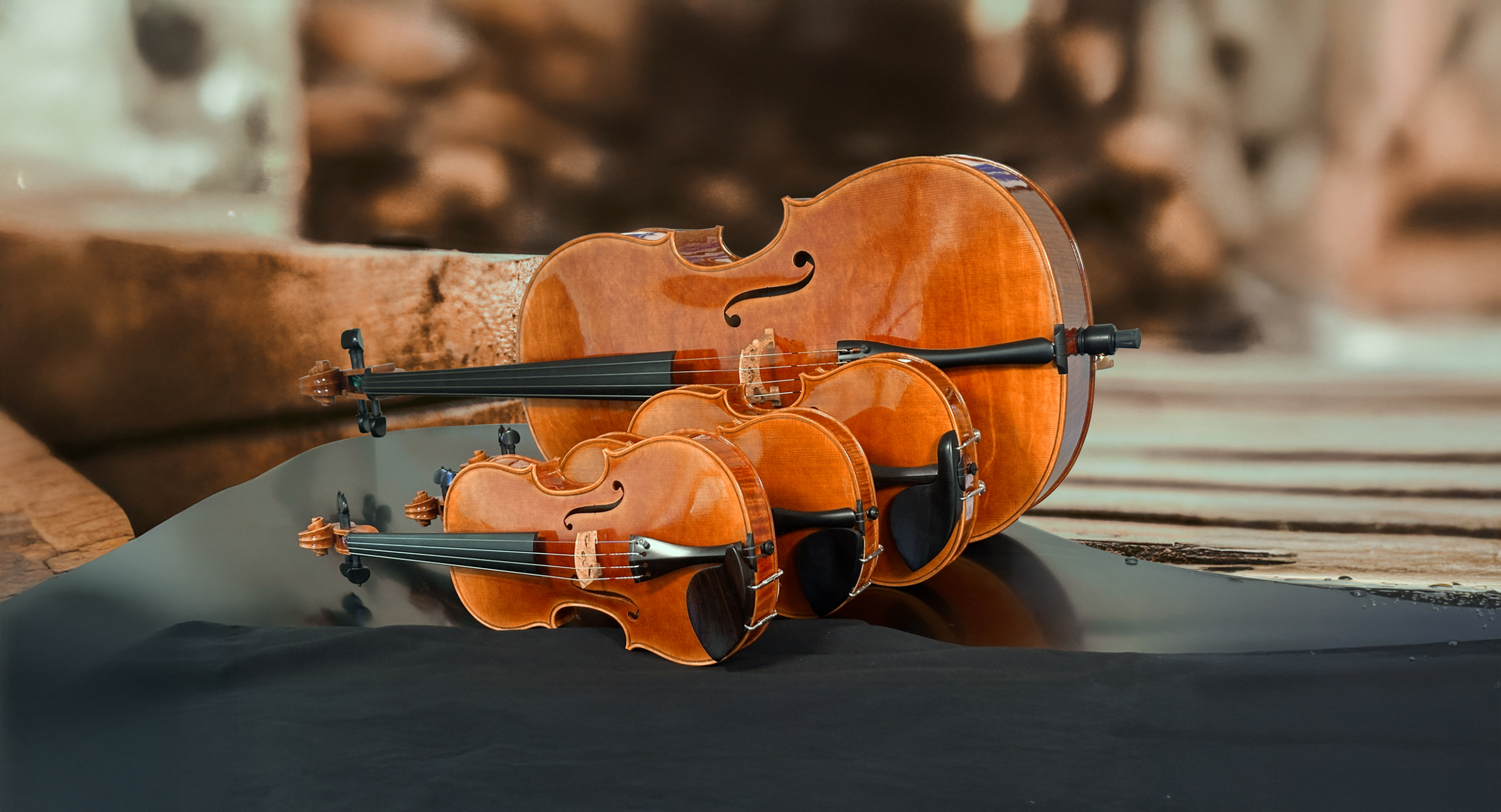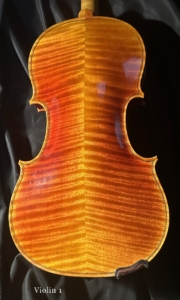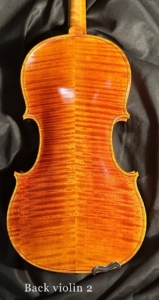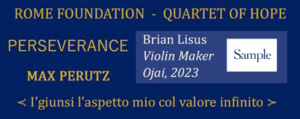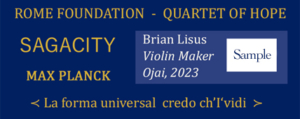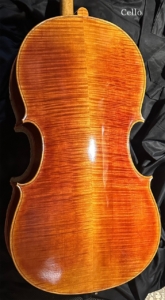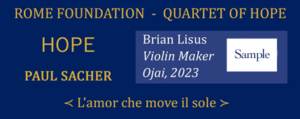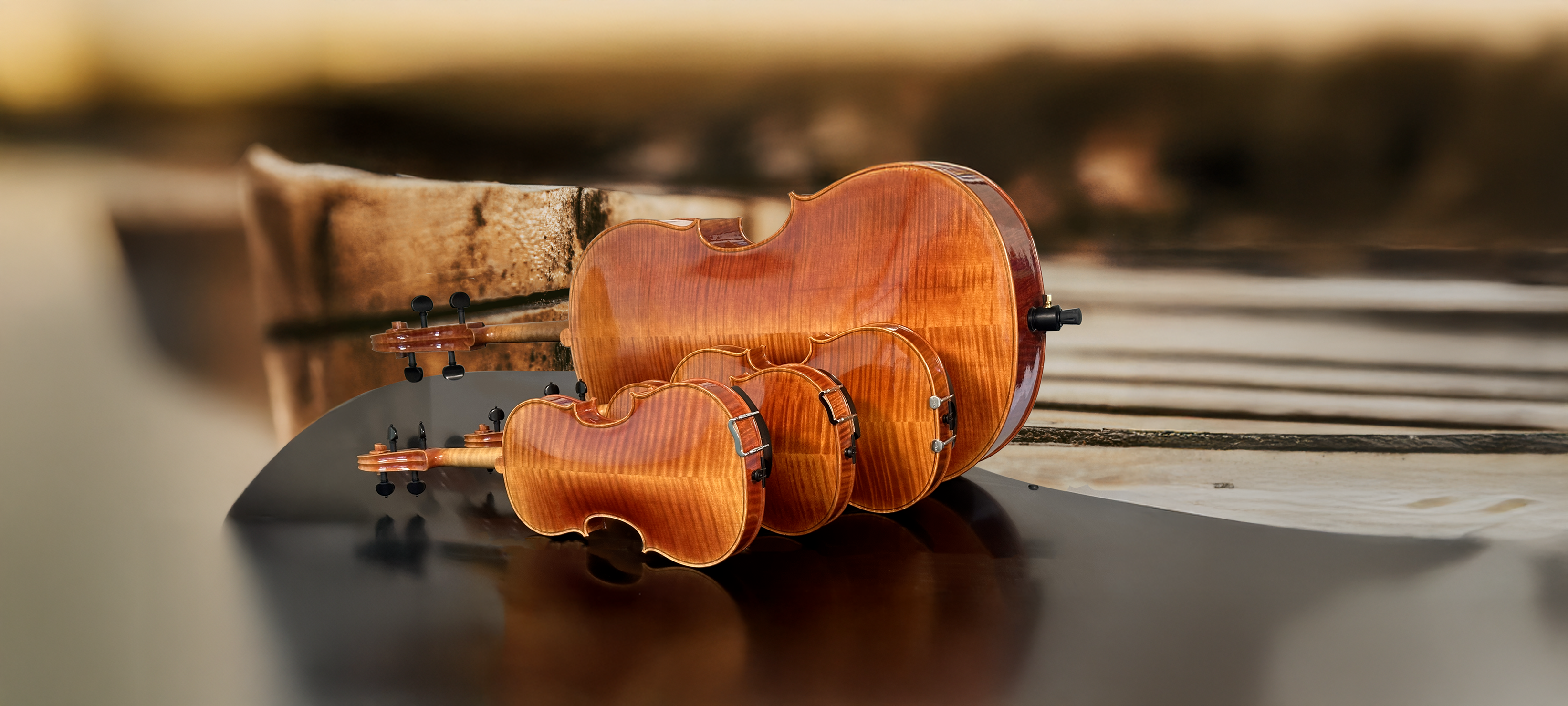Quartet of Hope
VIOLIN MAKER
Brian Lisus
The QUARTET OF HOPE is the work of South African-born violinmaker Brian Lisus, based in Ojai near Los Angeles and was commissioned by the ROME Foundation Göttingen. The instrument ensemble was conceptually modelled for each other as string quartet throughout its entire making from 2021-2023, starting with model variation, wood selection, arching and thickness grading of the top and back profiles, F-hole cutting, varnishing, cutting of bridge, string selection as well as intense set-up fine-tuning. All the materials, tools and “ingredients” used in the instruments have already been available between 1650 and 1740 in northern Italy. Brian Lisus created his models over decades of obsessive, meditative detailed work and insights of instruments of the Italian golden period. On the outside, the instruments are based on features by Stradivari and Montagnana, but have elements of Guarneri del Gesu and Goffriller in their thickness profiles.
Brian Lisus trained at the renowned Newark Violin Making School, UK. He is a vilolin maker who does not advertise, only works on commission and does not sell through distributors. He builds exclusively on his own. His practice is devoid of modern physical measuring methods, as their reference-based nature hinders his intuition and creativity. He says that he studied many historical instruments during and after his training. The varnish formula based on refined walnut oil and Strasburg turpentine was developed as a reverse engineering project in collaboration with his classmates, some of the most eminent violinmakers of his generation, and is surprisingly close to the original Cremonese models of the golden period. Brian has done significant work on the colouring. He is transparent about his working methods – and recipes. When he published the varnish, Strasburg turpentine sold out internationally within a few hours. He has published an autobiographical, allegorical-introspective work with fascinating details about violin making under the title “The Morning Light never passes us by”.
Brian Lisus is the creator of another quartet, the Quartet of Peace, named after the Nobel Peace Prize winners of South Africa.
The QUARTET OF HOPE is the work of South African-born violinmaker Brian Lisus, based in Ojai near Los Angeles and was commissioned by the ROME Foundation Göttingen. The instrument ensemble was conceptually modelled for each other as string quartet throughout its entire making from 2021-2023, starting with model variation, wood selection, arching and thickness grading of the top and back profiles, F-hole cutting, varnishing, cutting of bridge, string selection as well as intense set-up fine-tuning. All the materials, tools and “ingredients” used in the instruments have already been available between 1650 and 1740 in northern Italy. Brian Lisus created his models over decades of obsessive, meditative detailed work and insights of instruments of the Italian golden period. On the outside, the instruments are based on features by Stradivari and Montagnana, but have elements of Guarneri del Gesu and Goffriller in their thickness profiles.
Brian Lisus trained at the renowned Newark Violin Making School, UK. He is a vilolin maker who does not advertise, only works on commission and does not sell through distributors. He builds exclusively on his own. His practice is devoid of modern physical measuring methods, as their reference-based nature hinders his intuition and creativity. He says that he studied many historical instruments during and after his training. The varnish formula based on refined walnut oil and Strasburg turpentine was developed as a reverse engineering project in collaboration with his classmates, some of the most eminent violinmakers of his generation, and is surprisingly close to the original Cremonese models of the golden period. Brian has done significant work on the colouring. He is transparent about his working methods – and recipes. When he published the varnish, Strasburg turpentine sold out internationally within a few hours. He has published an autobiographical, allegorical-introspective work with fascinating details about violin making under the title “The Morning Light never passes us by”.
Brian Lisus is the creator of another quartet, the Quartet of Peace, named after the Nobel Peace Prize winners of South Africa.



